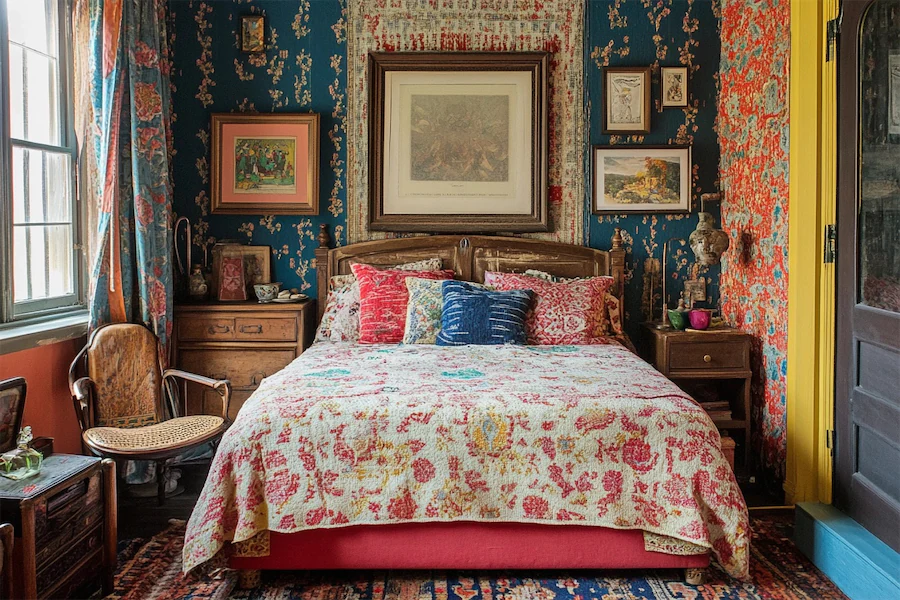A patterned bedroom incorporates various designs and motifs through textiles, wallpapers, and accessories to create a dynamic and personalized space.
Introduction to Patterned Bedrooms
Integrating patterns into bedroom design adds visual interest, depth, and character. Patterns can range from subtle textures to bold prints, allowing for customization that reflects individual style and enhances the room’s ambiance.
History and Origins of Patterned Bedrooms
The use of patterns in interior design has evolved over centuries, influenced by cultural trends and technological advancements in textile production. From intricate damasks of the Victorian era to the geometric prints of mid-century modern design, patterns have been integral in expressing aesthetic preferences and societal influences within bedroom decor.
Key Features of Patterned Bedrooms
- Textiles: Incorporate patterned bedding, curtains, and rugs to introduce motifs and textures. For example, floral bedspreads can add a touch of elegance, while geometric rugs provide a modern edge.
- Wallpaper and Wall Treatments: Utilize patterned wallpapers or stenciled designs to create accent walls or envelop the entire room, adding depth and focal points. Geometric patterns can offer a contemporary feel, while toile prints evoke a classic ambiance.
- Furniture and Accessories: Select furniture with patterned upholstery or add decorative pillows and throws featuring various prints to layer textures and designs. A patterned headboard can serve as a statement piece, anchoring the room’s design.
- Mixing Patterns: Combine different patterns thoughtfully to achieve a cohesive look. Pairing large-scale prints with smaller ones or mixing stripes with florals can create a balanced and harmonious design.
Applications of Patterned Bedroom Design
- Modern Aesthetics: Incorporate geometric patterns and clean lines for a contemporary look. For instance, a bedroom featuring a geometric accent wall can add a modern touch.
- Traditional Styles: Use classic patterns like damask or toile to evoke a timeless and elegant atmosphere. A bedroom adorned with traditional patterned wallpaper and matching textiles can create a cohesive and sophisticated space.
- Eclectic Designs: Mix and match various patterns and textures to achieve an eclectic and personalized space. Combining patterned bedding with contrasting wallpaper can result in a unique and vibrant bedroom.
Considerations When Designing a Patterned Bedroom
- Color Harmony: Ensure that the color schemes of different patterns complement each other to avoid visual discord. Sticking to a cohesive color palette can help in achieving a harmonious look.
- Scale and Proportion: Balance large and small-scale patterns to create visual interest without overwhelming the space. For example, pairing a large floral wallpaper with smaller geometric patterned pillows can provide balance.
- Room Size: Consider the room’s dimensions when selecting patterns; large prints can make a small room feel cramped, while small patterns might get lost in a spacious area. Choosing appropriate pattern sizes can enhance the room’s proportions.
- Personal Style: Reflect individual preferences and personalities through pattern choices, ensuring the bedroom feels comfortable and authentic. Incorporating favorite motifs or culturally significant patterns can add a personal touch.
Conclusion
Incorporating patterns into bedroom design offers a versatile approach to creating dynamic and personalized spaces. By thoughtfully selecting and combining patterns in textiles, wallpapers, and accessories, you can craft a bedroom that reflects your style and enhances the room’s overall ambiance.
